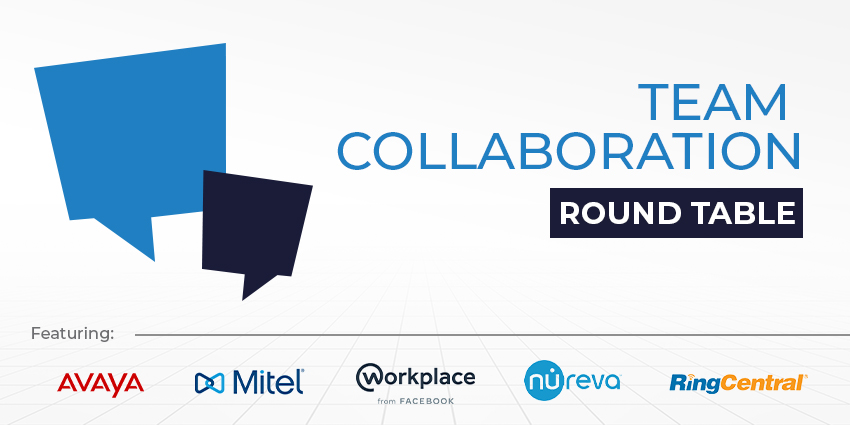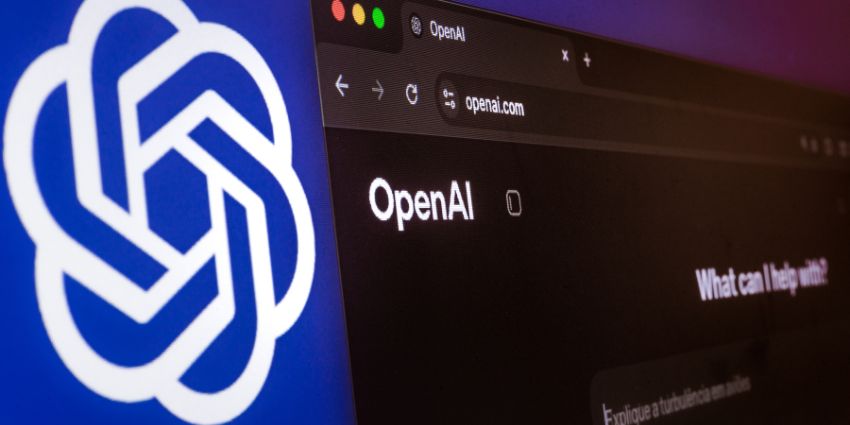Team collaboration is the beating heart of most organisations, as colleagues work together to ensure projects succeed and targets are met.
Traditionally, collaboration was often seen as in-person meetings and interactions conducted in the office. But that was redefined when the pandemic hit and the majority of organisations and their teams had to learn how to collaborate virtually.
We gathered together industry experts to discuss how team collaboration has transformed over the past year and a half and what it might look like going forward. Our panelists are from Mitel, Avaya Workplace From Facebook, RingCentral, and Nureva.
How has team collaboration had to evolve over the course of the last 18 months?

Nancy Knowlton, CEO of Nureva:
“When the pandemic hit and everyone began WFH, collaboration meant a seemingly endless stream of Zoom meetings – face-to-face meetings just moved online.
“When people realised we would stay home longer than a few months, more structure was introduced into the process. Focus time was carved out of the day, and there was more discrimination around the need for meetings, who should attend a meeting, and always having a stated purpose and agenda. The process began to evolve and individuals and teams consciously considered what worked and what didn’t.”

Nick Riggott, Country Sales Director UK&Ireland at Mitel:
“While technologies like videoconferencing had been around for a while, their use was much more limited. It took time for some to get to grips with the tech on a functional basis – and the many comical scenes of things going wrong that have been shared on social media are a testament to that.
“What came next was more interesting: when work is fully office-centric, presenteeism can set in. Some staff need to be seen as busy, rather than productive. Now it’s all about the output – your teammates only see what you bring to the table, and that’s a boost for productivity and puts team collaboration tool at the forefront.”
Nazir Ul-Ghani, Head of EMEA, Workplace from Facebook:
“Companies have realised that ‘getting work done’ doesn’t mean hours of video calls. To truly get work done virtually you need tools that allow for synchronous and asynchronous ways of working with colleagues”
“While the pandemic accelerated our use of tech at work, it also shone a light on the ‘office biases’ companies hold. The truth is that many employees didn’t stop coming to the office due to Covid-19 – they never worked there to begin with. Frontline workers have always been ‘remote’ and often not given the tools to connect and collaborate with colleagues. The last 18 months have given organisations the opportunity to level the playing field and give these workers a voice.”

Rob Carmichael, Workplace Specialists at Avaya:
“Team collaboration has had to rapidly evolve and mature. Security, privacy, and reliability-related features have rightly been identified as key capabilities to support an exponential uptake in usage. Now, the integration with these tools into our existing communication channels is key, as it will help drive productivity gains from the new ways of working.”
What technology has seen a rise in popularity?
Nick Riggott, Country Sales Director UK&Ireland at Mitel:
“There’s one clear answer – video conferencing (VC). VC is now not only ingrained in our day-to-day work practices but our work culture.
“This isn’t a blip – it’s changed the concept of what a team can be: perhaps most interestingly, they can now be truly global, with talent drawn from across regions collaborating in real-time”
Rob Carmichael, Workplace Specialists at Avaya:
“Video as a channel of communications has, of course, rapidly taken off. Where once people would have been content to join a call via audio, colleagues and managers have wanted a more natural interaction with their teammates.
“For many, however, working from home has been a new experience and not everyone is able to dedicate a room to become the home-office. Automatic noise cancellation and virtual backgrounds are proving to be key features to bridge the gap”

Nat Natarajan, EVP of Products, RingCentral:
“Security and artificial intelligence (AI) – Security is paramount in enabling employees to work from anywhere. As people increasingly find themselves starting a meeting on the way home from a school run and flipping that meeting from the car Bluetooth to the phone to the laptop, it has become critical for security leaders to ensure that these increases in employee mobility and device-hopping don’t put sensitive data at risk.
“In terms of AI, organisations are looking for platforms that can analyse business conversations and extract meaningful insights.”
How will team collaboration look after the pandemic?
Nancy Knowlton, CEO of Nureva:
“Collaboration will be more intentional, and there will be a deeper understanding of the various aspects of collaboration and how a team’s individual and group work knits together.
“Organisations are examining the various work activities that their teams undertake to determine what should be done synchronously versus asynchronously, what can best be done individually versus as a group and what can best be handled face to face versus virtually”
“For a long time, people have interchanged ‘meetings’ with ‘collaboration’ when they really are not synonymous. Understanding more about what constitutes the various elements of collaboration will drive new ways of working that will be both more flexible and responsive to individual and organisational needs.”

Nazir Ul-Ghani, Head of EMEA, Workplace from Facebook:
“The post-pandemic world of work will be more distributed than ever. People won’t simply ‘go back to normal’: yes, there will be employees working on the frontline and HQ, but there will also be employees working from home offices all over the world and the potential to hire talent from anywhere.
“The onus is on companies to find a way to level the playing field and create equitable work experiences for all. Because people working in a different location shouldn’t feel less empowered and informed than their in-office counterparts. To make this work, companies and managers must check their ‘office bias’ and rethink working practices with a disparate workforce in mind.”
Nat Natarajan, EVP of Products, RingCentral:
“A variety of pitfalls await businesses as people return to the office. For starters, no one quite knows what “hybrid working” really means.
“In a world in which employees switch frequently between the office, home and any other workspace, we need technology that makes these transitions seamless – that’s a fundamental requirement for collaboration.
“The best collaboration services will need to support multiple platforms, but also multiple mediums of communication – from team messaging to SMS, audio, and video calling. The whole concept of cloud-based communications has become a priority for every company, regardless of size”
Nick Riggott, Country Sales Director UK&Ireland at Mitel:
“Workplace-based collaboration comes naturally, and we’ve now had plenty of practice working fully remote. The question is, how do we combine both?
“Further developments in technology will help. The adoption of more advanced AI, predictive analytics, VR and AR will enable more personalised and seamless digital experiences, making hybrid working more effective. But management skills will have to adapt too.
“We need to get the balance right between meaningful collaboration and efficiency; the benefits of getting it right – the best of both worlds – are worth it.”







